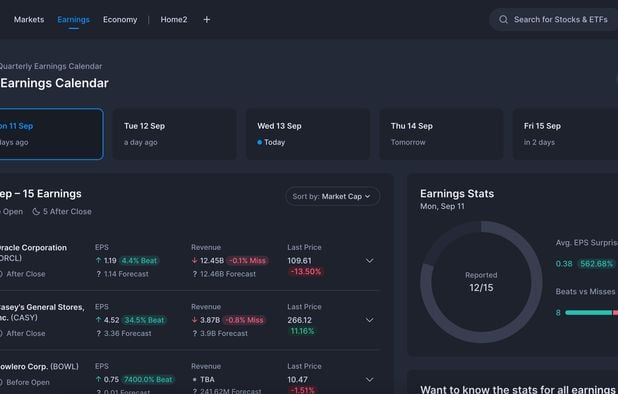20 Excellent Ideas For Deciding On AI Stock Picking Platforms
Top 10 Tips On Pricing And Costing Of Ai Stock Analysing Trading PlatformsTo get the most out of your investment, it is important to know the pricing of AI analysis and stock prediction platforms. Knowing the pricing structure is important for making an informed decision. Below are the top 10 ways to evaluate the pricing and cost of these platforms.
1. Understanding the Pricing Model
Subscription-based : Determine if there is a monthly fee or an annual fee and the features included in each level.
Pay-per-use : Confirm that the platform charges according to usage (e.g. trades, requests for data or forecasts).
Freemium Model: Examine to see if the platform has a free model which offers only a few features. The premium features are paid for.
2. Compare Pricing Tiers
Compare features across each pricing level (e.g. basic, professional).
Scalability: Ensure that the price tiers are aligned to your needs.
Upgrade flexibility - Check to see if there are any easy ways to upgrade your plan or downgrade it if your requirements be changing.
3. Evaluate Hidden Costs
Data fees: Make sure to check for any additional charges for premium data (e.g. real-time data or advanced analytics).
Brokerage fees: Verify whether there are any extra charges associated with the platform to be integrated with brokers or execute trades.
API usage: Assess whether the cost of API access is more expensive or if API use is high-frequency.
4. Demos and Trials are Available for Free
Trial period: Look for platforms that provide the opportunity for a free trial or demo of their capabilities before you commit to.
Trial limitations: Make sure to check whether the trial you are using is included in all of the features, or if it is limited in functionality.
No-commitment option: If you don't like the service, you are able to end the subscription at no cost.
5. Check for Promotions and Discounts
Discounts on annual subscriptions Comparing the monthly plan against an annual subscription.
Referral Programs Find out if your platform offers discounts or credit to users who refer others.
Prices for institutions If you're part of a company that is larger than you, ask about bulk pricing or institutional pricing.
6. How do you assess return on investment (ROI).
Cost vs. value - Find out if the platform's capabilities, features, and predictions are worth the cost. Can it, for instance aid you in making a better trading decision or help you save time.
Research the platform's success rate, or testimonials from users to assess its potential return on investment.
Alternative costs Costs of the platform: Compare its cost to the potential cost of not using it (e.g., missed opportunities, manual analysis time).
7. Review, Cancellation, and Refund Policies
Cancellation Terms: You can cancel without hidden charges or penalties.
Check the policy on refunds to determine if you can get a refund for any unredeemed subscription portion.
Auto-renewal: Verify whether the platform auto-renews your subscription, and how you can remove yourself from the subscription.
8. Assess Transparency in Pricing
Clear pricing page: Ensure that the platform offers a pricing page which is complete, transparent and does not contain any hidden fees.
Customer support Contact customer support to provide clarification on any pricing issues or additional costs.
Contract Terms: Check the conditions of service for any penalties or long-term agreements.
9. Compare with Competitors
Check out the features and prices on different platforms to get the most value.
User reviews: Look at the feedback of users to determine whether the cost of the platform is worth it.
Check the market positioning of the platform. Does it meet your needs?
10. Assess the long-term costs
Price hikes: Check out the past history of the platform and observe how often it has raised prices.
Feature additions: Assess if new features are included in your plan currently or need an upgrade.
Scalability costs: Ensure the pricing of your platform is reasonable in the event that your trading activities or data requirements grow.
Bonus Tips
Trial different platforms: Try multiple platforms during free trials to test their performance and value.
Negotiate your pricing. If you're part or a larger institution or if you use the product in large quantities, discuss pricing options that are custom.
Check out educational resources. A lot of platforms offer free educational materials or tools, which can be an excellent addition to their main features.
If you follow these guidelines, you'll be able to assess the cost, pricing, and the features offered by AI stock trading platforms. A reasonable price for a platform should be able balance affordability with functionality. This will allow you to achieve maximum trading success. Check out the recommended ai for stock trading url for more recommendations including chatgpt copyright, ai trading, best AI stock trading bot free, AI stock market, best ai trading app, investment ai, best AI stock, investing ai, investing ai, best ai trading software and more.

Top 10 Tips On Assessing The Regulatory Conformity Of Ai Stock Prediction/Analyzing Trading Platforms
When evaluating AI trading platforms, regulatory compliance is crucial. Compliance ensures that a platform is in compliance with financial regulations, operates within legal frameworks while safeguarding user data. This reduces the risk of financial penalties or legal problems. Here are 10 top ways to evaluate the regulatory compliance of such platforms:
1. Verify Registration and License
Authorities regulating the platform: Make sure that the platform's registration and license is registered with the relevant financial regulatory authorities (e.g. SEC or FCA in the USA, ASIC or ASIC in Australia).
Broker partnerships: Verify that the brokers who are integrated into the platform are also properly licensed.
Public records: Go to the official website of the regulator to verify the status of registration and the history of violations.
2. Assessment of the data privacy Compliance
GDPR when operating in the EU or offering services to users there, the platform should comply with the General Data Protection Regulation.
CCPA: California Consumer Privacy Act compliance is required for users.
Data handling policies. Review the platform’s privacy policy and make sure it clarifies the ways in which data regarding users is used to collect, share, and stored.
3. Assess Anti-Money-Laundering (AML) Measures
AML policies - Check that the platform's AML policies are robust and effective in detecting, prevent and detect money laundering.
KYC procedures: Find out whether the platform supports Know Your Customer (KYC), which verifies user identities.
Monitoring transactions: Find out if the platform is able of monitoring transactions and reporting any suspicious transactions to relevant authorities.
4. Check for Compliance with Trading Regulations
Market manipulation: Check that the platform includes measures to prevent manipulation of the market, for example, spoofing and wash trading.
Order types. Check that the platform complies with the regulations pertaining to order types (e.g. there isn't any stop loss hunting that is illegal).
Best execution: Verify that the platform adheres to the most efficient execution procedures to ensure trades are executed at the most favorable price.
5. Cybersecurity compliance assessment
Data encryption: Ensure that the platform protects data during transit and while at rest, using encryption.
Incident response Response to incidents Verify the system's plans to take action in the event of cyberattacks or data breaches.
Certifications: Determine if a platform is accredited for cybersecurity (e.g. ISO 27001, SOC 2)
6. Transparency Evaluation and Disclosure
Fee disclosure - Ensure that all fees are clearly disclosed, even additional or hidden charges.
Risk disclosure - Make sure that the platform provides clear risk disclosures. This is crucial for trading strategies with high leverage or risk.
Performance reporting: Find out whether the platform offers transparent and accurate performance reports on its AI models.
7. Check for compliance with International Regulations
Trading cross-border: If you want to conduct international trade, ensure that the platform is compliant in all countries.
Tax reporting: Check whether the platform has tools or reports to assist users adhere to tax regulations.
Conformity with sanctions: Ensure whether the platform is in compliance with international sanctions, and doesn't allow trading with prohibited entities or countries.
8. Examine the records-keeping and audit trail
Transaction records: For regulatory and auditing reasons, ensure that the platform has full logs of each transaction.
User activity logs - Make sure that the platform logs all user activity including transactions that are made as well as any changes made to account settings.
Audit readiness: Determine if the platform has the necessary documents and logs in the event an audit by a regulatory agency.
9. Check for compliance with AI-Specific Regulations
Algorithmic rules of trading: If a platform supports the use of algorithms, it should conform to European regulations such as MiFID II and U.S. Reg SCI.
Bias and Fairness: Verify that the platform monitors, and mitigates, biases within its AI models to ensure fair trading.
Explainability: As required by certain regulations, the AI platform should provide clear explanations of AI-driven decisions and predictions.
10. Review the User's Feedback and the Regulatory History
User reviews: Use user feedback to determine the platform's compliance with regulations.
The history of regulatory compliance - find out if the platform is known for any past regulatory violations or fines.
Third-party checks: Check that the platform is in compliance with the law by checking if it undergoes regular audits from third parties.
Bonus Tips:
Legal consultation: Contact an expert on the subject to check whether your platform is compliant with regulations.
Trial period: Test the platform free of charge or utilize the demo feature to test the compliance features and documentation.
Customer support - Check that the platform is able to provide assistance for any compliance-related concerns or questions.
Use these guidelines to assess the compliance with regulations and protect of your rights. The compliance not only reduces the legal risk but also improves confidence in the service of a platform. Take a look at the top best stock prediction website for more advice including AI stock prediction, AI stock investing, ai in stock market, chart ai trading, how to use ai for copyright trading, investing with ai, invest ai, ai for trading stocks, ai in stock market, ai share trading and more.
